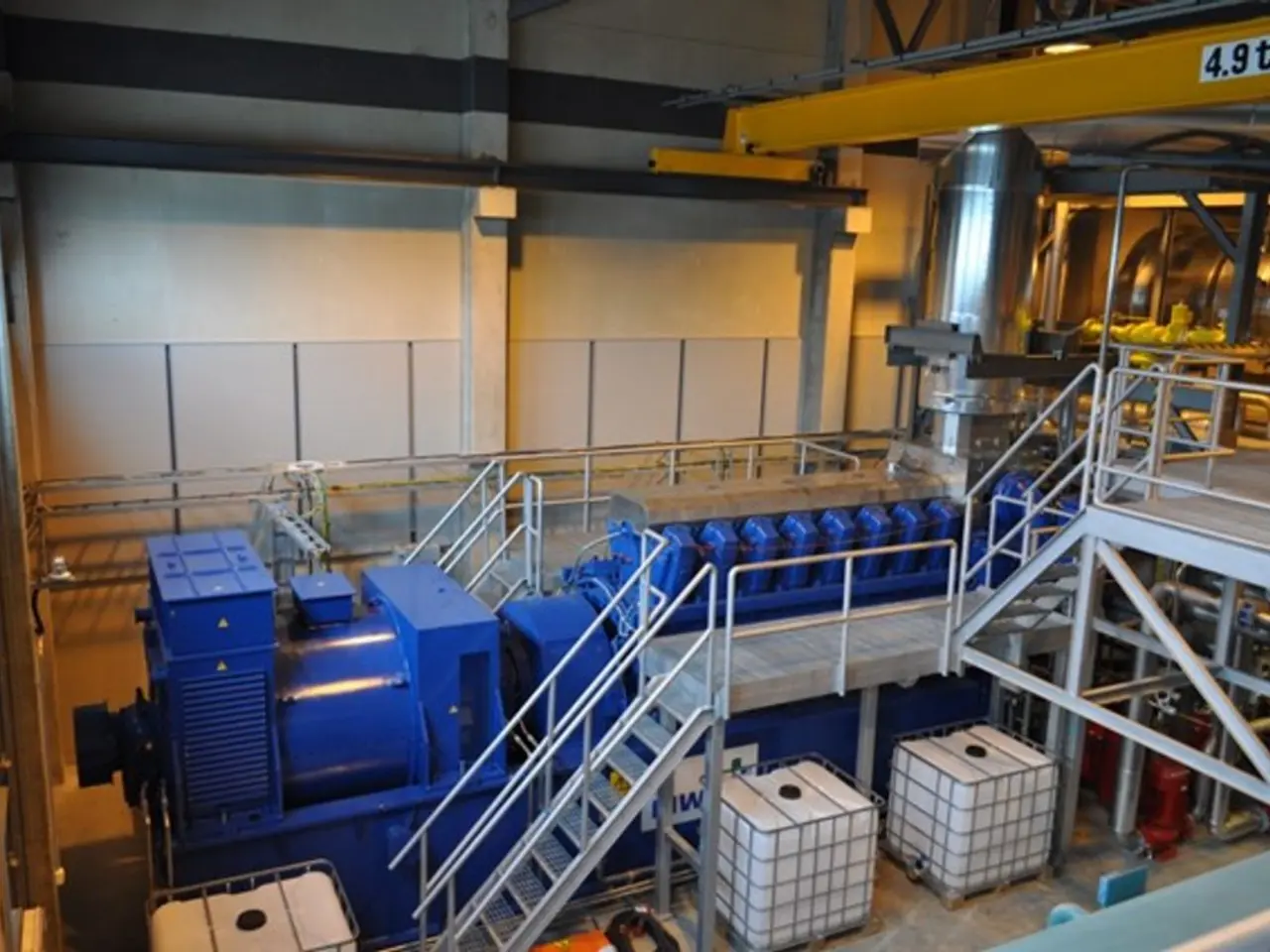Japan's interest in the potential and risks of investing in Alaskan natural gas
Alaska LNG Project: A Potential Game-Changer for East Asian Energy Market
The Alaska LNG project, a $44 billion initiative, is poised to revolutionize the liquefied natural gas (LNG) market in Asia, with a target to start shipping LNG around 2030-2031 [1][3][4][5]. Led by the Alaska Gasline Development Corp. (AGDC), the project involves constructing an 800-1,300 mile pipeline to transport gas to a liquefaction terminal on Alaska’s Kenai Peninsula, where it will produce up to 20 million tons of LNG annually.
Current Status
After years of uncertainty, the project has gained momentum, moving from concept to a fully approved plan. The U.S. and Japan have announced plans to form a joint venture around the project [1]. Over 50 companies, including Japan’s firms, Thailand’s PTT, and India’s GAIL, have shown commercial interest [4]. The final investment decision on the pipeline phase is expected later in 2025 [4].
Cost and Timing
The projected capital cost stands at approximately $44 billion [1]. The target year for starting shipments is 2030-2031, assuming timely project execution [3][5]. However, there remain uncertainties around binding purchase agreements and exact financial commitments, especially from Japanese partners [1].
Potential Benefits
The project promises a new source of affordable energy for Alaskans and significant export revenues for the state [3]. It also enhances energy security and geopolitical leverage for the U.S. and its allies in Asia by diversifying LNG supply sources [1]. The project could meet long-term demand in East Asia, where natural gas remains key under energy transition scenarios [3].
Competition with Other LNG Suppliers in East Asia
The Alaska LNG project faces competition from other LNG suppliers, including U.S. Gulf Coast exporters, Canadian LNG projects, Australia, Qatar, and Russia [2][4]. Alaska’s geographical location provides some advantage in shipping distance and potentially competitive landed costs [2][4]. The success of Alaska LNG will depend heavily on securing long-term purchase agreements and navigating regulatory and infrastructure challenges.
Geographical Advantage
The biggest advantage of Alaska LNG for Japan and its neighbors is geographical proximity, with the southern coast of Alaska being only about 6,000 kilometers from Japan, offering lower transportation costs and more flexible delivery schedules.
Alaska's Domestic Needs
Alaska depends heavily on locally extracted natural gas for its own heating and industrial purposes. The Kenai Peninsula's gas reserves have been dwindling, with supplies expected to run out in the mid-2030s. A 20-year LNG contract concluded in 2030 will last through 2049, making it important to begin export operations as soon as possible to secure funding for the future.
Political Considerations
Trump's executive order Unleashing Alaska's Extraordinary Resource Potential presents an opportunity for the Alaska LNG project, but the window of opportunity is narrow due to Trump's term of office and the looming net-zero deadline. Japan, South Korea, and Taiwan have a clear need for LNG going forward, presenting a business opportunity for Alaska LNG. However, the project's long lead time could result in it not beginning exports until after the end of Trump's second term of office in January 2029, potentially exposing it to policy changes that could be unfavorable.
In conclusion, the Alaska LNG project represents a significant opportunity for both Alaska and the East Asian market. Its high cost, long timeline, and competitive market environment require careful commercial and political alignment from stakeholders to realize its potential by 2030-2031. The project remains under active negotiation with key Asian buyers, and further clarity on costs and commitments is expected in late 2025 [1][4][5].
- The Alaska LNG project, with a target to start shipping LNG around 2030-2031, holds the potential to reshape the global energy market, particularly in East Asia.
- The project, involving the construction of a pipeline to transport gas to a liquefaction terminal, has captured the interest of over 50 companies from Japan, Thailand, India, and more, signifying a promising business opportunity.
- Analysis of the project's geographical advantage reveals that its closer proximity to Japan and neighboring countries offers lower transportation costs and more flexible delivery schedules, potentially giving it a competitive edge.
- The success of the Alaska LNG project, however, depends heavily on securing long-term purchase agreements and navigating regulatory and infrastructure challenges, as competition from other LNG suppliers is fierce.
- Political considerations surrounding the project, such as Trump's executive order and the looming net-zero deadline, add a layer of complexity to the project's timeline and potential viability, making strategicshareholder alignment crucial for its realization by 2030-2031.







